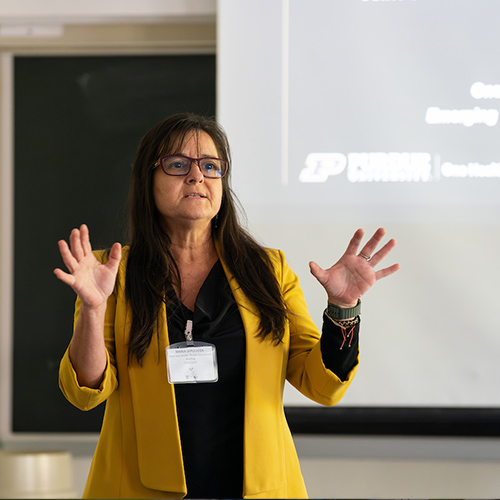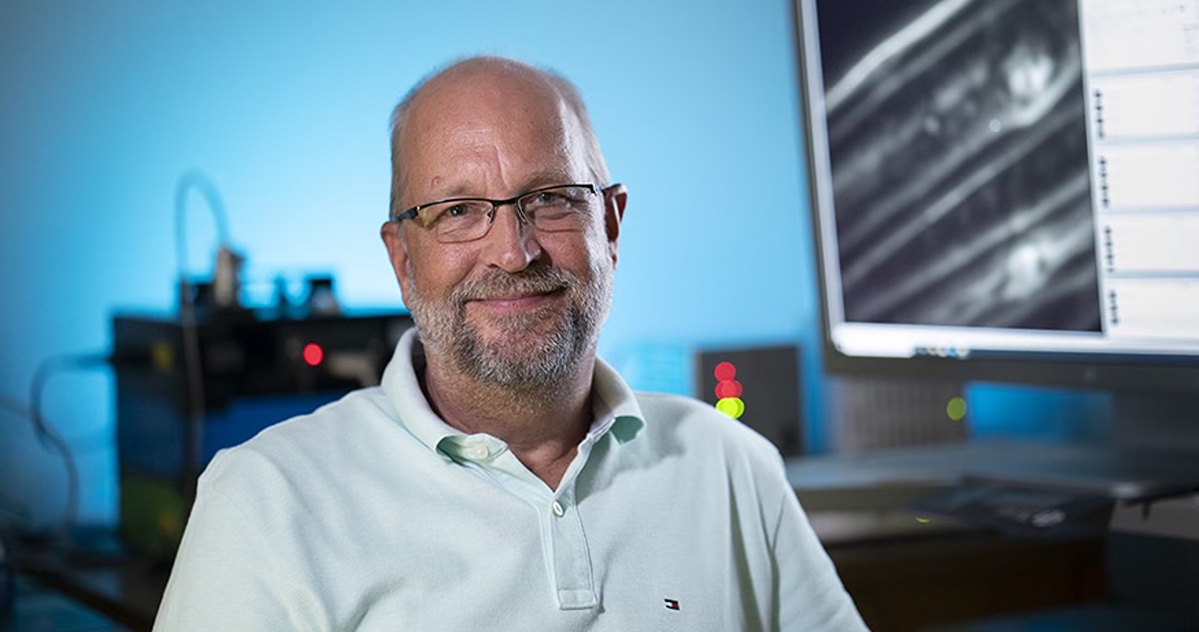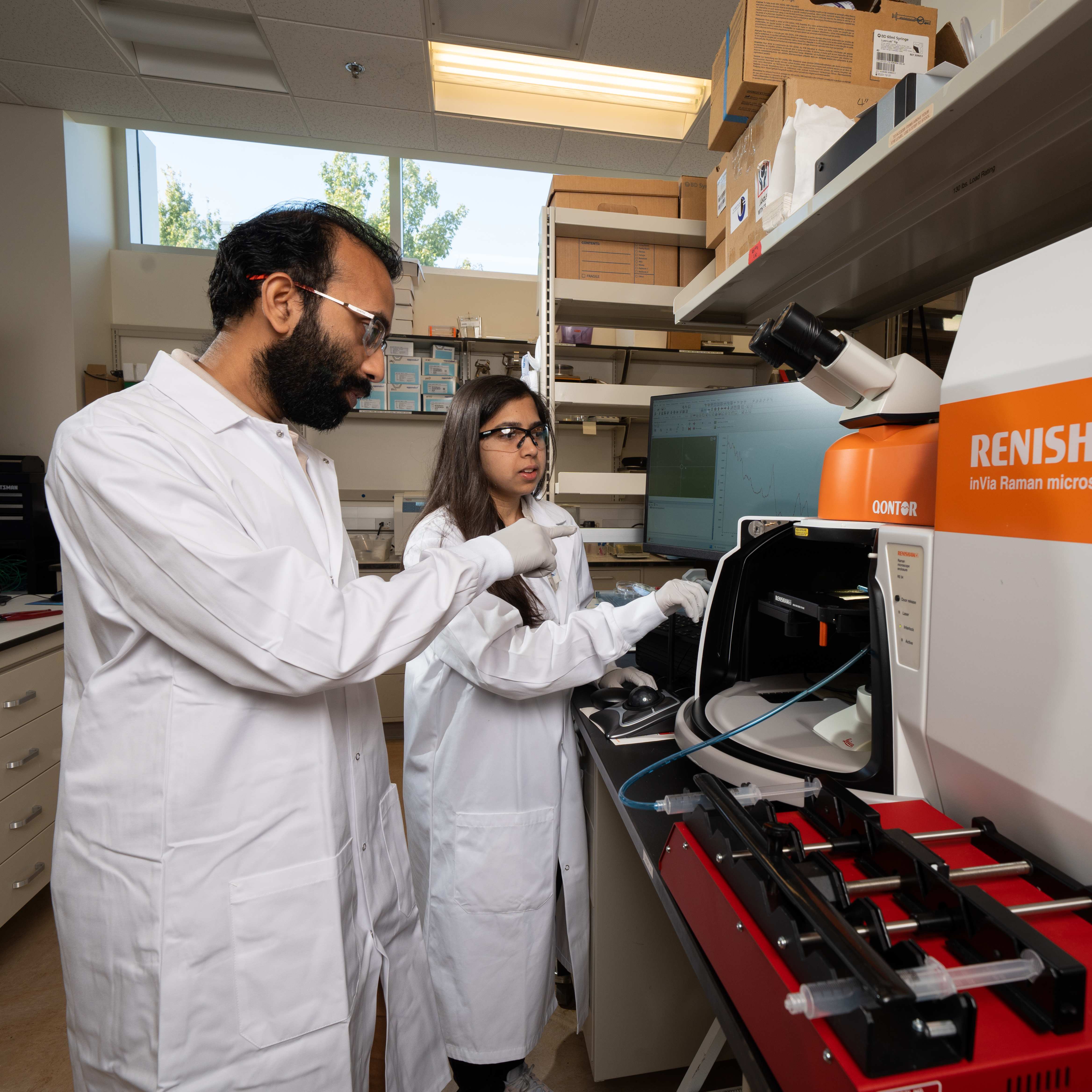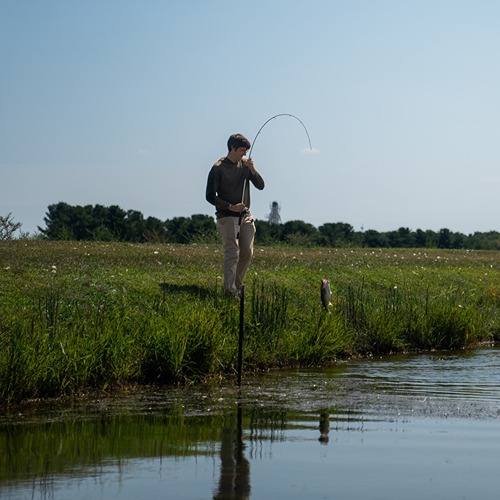Tracking ticks and tackling disease: AI transforms medical entomology
ONE HEALTH | MEDICAL ENTOMOLOGY & AI
A robot “dog” may soon make its way from a Purdue entomology lab to fetch real-time data on tick populations in the wild.
It’s just one example of how artificial intelligence (AI) is transforming medical entomology by offering innovative ways to track, analyze and control the insect populations that affect human, animal and environmental health.
Researchers in the Department of Entomology in Purdue University’s College of Agriculture are at the forefront of the field. They’re advancing the university’s One Health initiative as they use AI in new ways to study mosquitoes, ticks, cockroaches, bed bugs and other arthropods.
Understanding insect biology is crucial for developing effective pest control strategies and mitigating disease risks. However, traditional methods of studying and managing these insects are often labor intensive or damaging to environmental and human health.
“A priority for the Department of Entomology is what we call One Health vector technologies,” said Catherine Hill, professor and head of the department. “They will enable us to better control disease in the human and animal population through management of insect populations, but with minimal impacts on the environment.”
Purdue entomologists are using AI to enhance data collection, accelerate discoveries and improve efficiency in their research. This technological shift enables more precise, sustainable and effective methods for controlling the spread of pest-borne disease.
Tracking tick populations is essential for controlling the spread of tickborne diseases, but it’s not a straightforward task. That’s why Hill, alongside Maria Murgia, postdoctoral researcher in the entomology department, and Upinder Kaur, assistant professor in the Department of Agricultural and Biological Engineering (ABE), are combining AI, robotics and entomology for an innovative approach to tracking ticks.
Ticks thrive in complex environments, hiding in soil, leaf litter and underbrush. Their behavior changes based on factors like time of day, humidity and whether they’re “questing,” or looking to feed. Common surveillance methods, such as flagging and dragging – sweeping fabric over vegetation to collect ticks – or CO2 traps, are labor intensive, disruptive to the environment and can expose researchers to disease.
“You need to figure out when and where they’re most active,” said Murgia, the entomological lead for the project. “But that’s also when they pose the most danger to the operator.”
The multidisciplinary team combined their strengths to develop a solution that could effectively replace humans for tedious and time-consuming tasks. The result is a tick-tracking robot “dog” that uses several layers of AI to autonomously gather real-time data on tick populations in the wild.
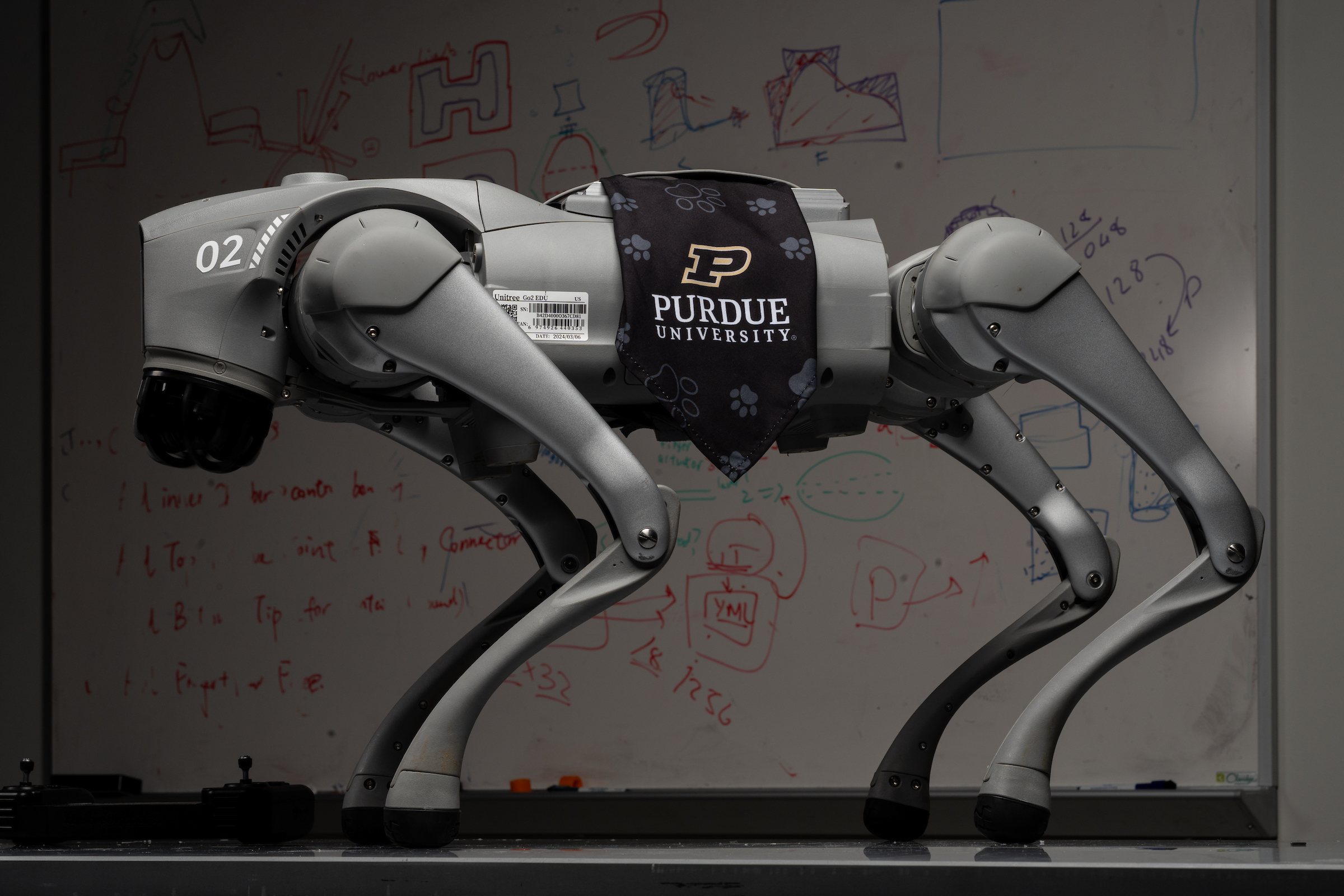
“We approached this by thinking of how the human brain functions,” said Kaur, the project’s lead roboticist. “There’s processing raw visual information to understand what you’re looking at, then cognition – identifying how things are changing – and finally, decision-making.”
The robot’s AI system processes information from multi-modal sensors, allowing it to find ticks hidden from sight, identify hotspots of tick activity and provide continuous monitoring without human intervention. In combination with cloud lab technology, the robot dog could theoretically collect data from any location with an internet connection.
While the robot dog hasn’t yet left the laboratory, the team is optimistic it will be field-ready soon, equipped with special paws and a tail in addition to its suite of sensors to help navigate difficult terrain.
Beyond improving surveillance, the data collected by robots could be used to better understand tick behavior by integrating with local weather sources and environmental monitors. The robots could also autonomously apply pesticides to insects hidden in dense vegetation or leaf debris, minimizing the need to spray the area with chemicals.
“If you have more information on the distribution of the vectors and the disease they carry, you could have targeted applications of insecticides,” Murgia said. “You reduce the burden of ticks and hence the burden of the disease they can transmit.”
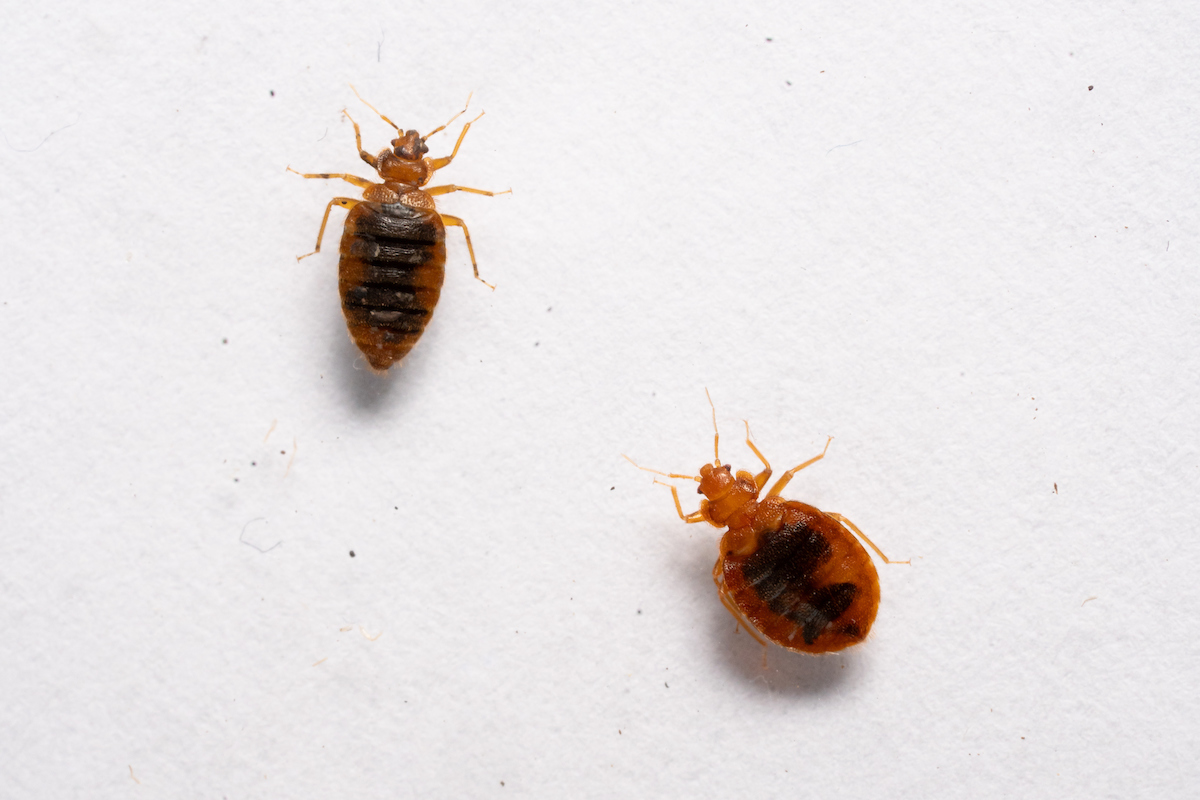 A close-up of bed bugs
A close-up of bed bugs 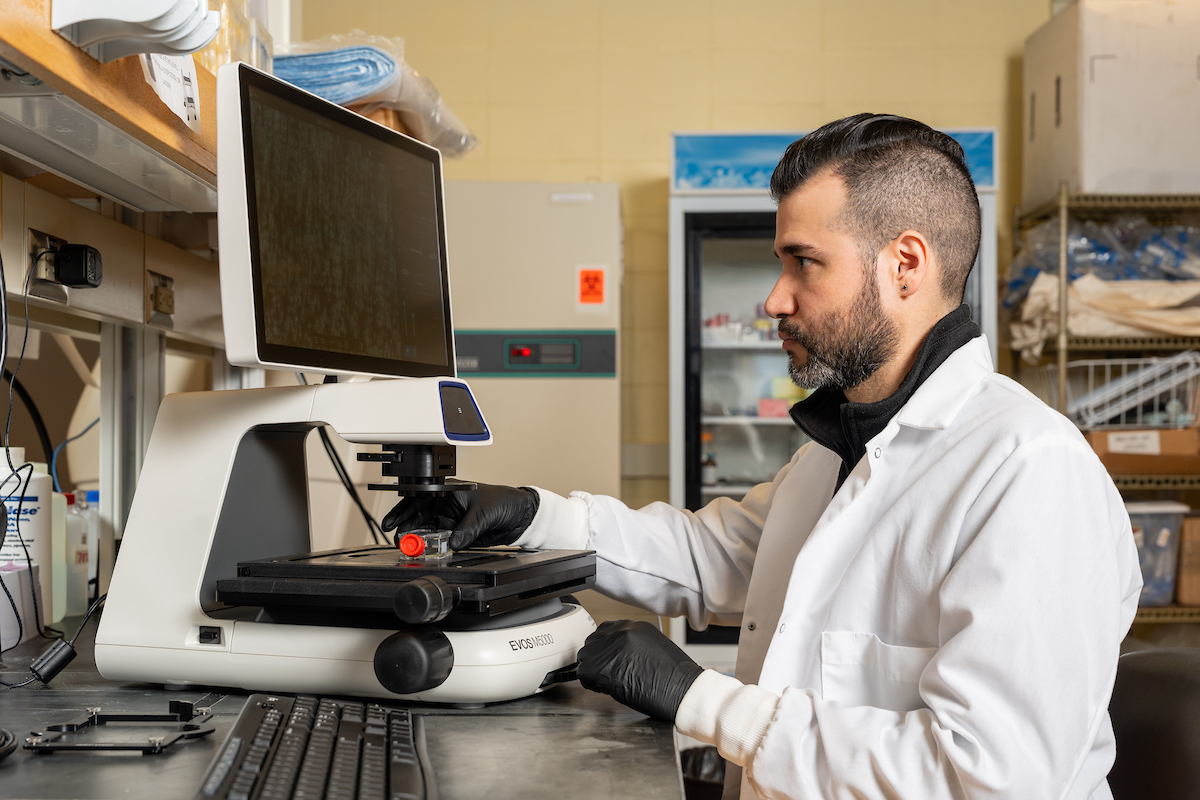 Pietri views insect cells on a microscope.
Pietri views insect cells on a microscope. Research in the Pietri Lab focuses on urban entomology, where test subjects are more likely to be found in trash than leaf litter. These insects boast robust immune systems: cockroaches thrive in unsanitary conditions while bed bugs are exceptionally resistant to infections.
Jose Pietri, O. Wayne Rollins/Orkin Endowed Chair in Urban Entomology, and his team are using AI to better understand the natural antimicrobial properties of bed bugs. Advanced machine learning models compare the insects’ genetic material with vast datasets of known antimicrobial compounds to identify proteins and peptides that might exhibit similar properties.
“The power of using AI is that it gives us a uniquely intelligent perspective,” said Pietri, who joined the department in October 2024. “It’s able to pull out new compounds that we wouldn’t intuitively identify from basic characteristics.”
Once identified, these compounds can be synthesized and tested in the laboratory to determine their efficacy against harmful bacteria, fungi and other pathogens. Pietri has already identified potentially useful antimicrobial agents based on bed bug biology.
Pietri’s research aims not only to advance our understanding of insect immune systems but also to pave the way for developing the next-generation of antimicrobial agents. These compounds could lead to novel therapeutics or contribute to innovative vector control strategies such as modifying the immune systems of mosquito populations to reduce disease transmission.
It’s easy to see how the two projects could converge: robot dogs could not only track and map pest populations but also apply targeted treatments based on antimicrobial compounds identified by AI. The possible applications to human, animal and environmental health are vast.
Purdue’s medical entomologists appreciate the transformative power of AI in accelerating the research process, but they emphasize that human expertise remains essential to interpreting results and guiding studies.
“You have to have the domain knowledge to make the research effective,” Hill said. “That means you have to have a person there as well.”
And while AI might not replace human entomologists, it could make an appearance closer to home before too long. Hill predicts the robot dog technology will one day make its way to consumers, delivering personalized pest control in the form of an automated backyard “pet.”
This research is a part of Purdue’s presidential One Health initiative, which involves research at the intersection of human, animal and plant health and well-being.

